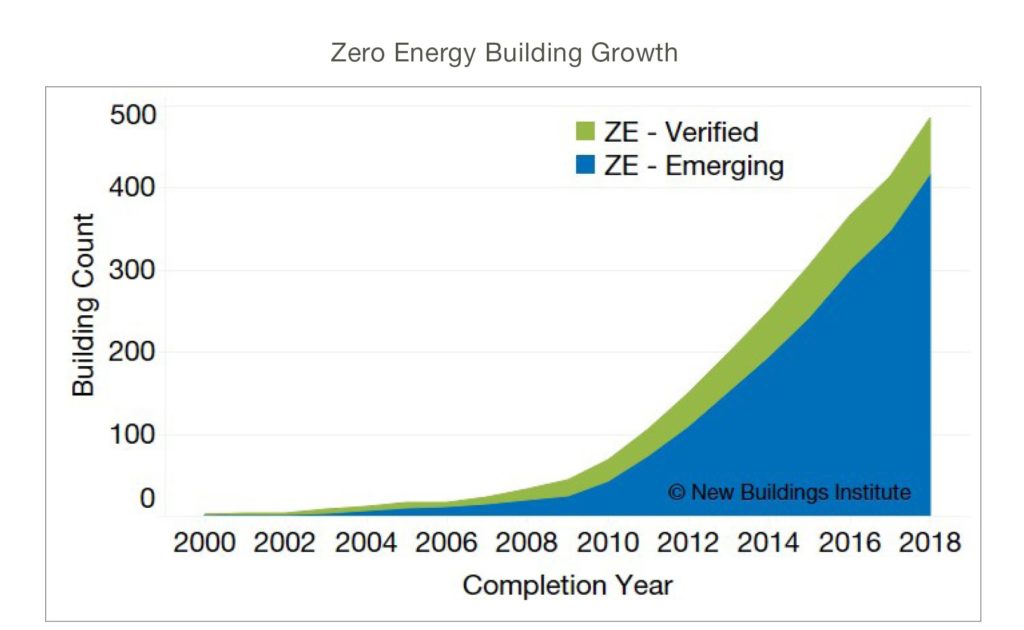by Ryan M. Colker, Vice President of National Institute of Building Sciences
We all know what it takes to lead a healthy life—eat your vegetables, exercise, and visit your doctor to monitor your cholesterol, blood sugar, weight and blood pressure. Now imagine what life would be like if you decided to eat broccoli, run 30 minutes every day and then hope for the best. It sounds ridiculous to try to be healthy without guidelines and targets (and regular monitoring of whether you’re inside or outside of acceptable ranges) for key health indicators. Unfortunately, most new buildings are largely being designed and constructed under a similar paradigm—using “tried and true” design principles with the hope that, once constructed, they’ll be energy efficient.
If energy use, greenhouse gas emissions and community health matter, then having the tools, technologies, policies and practices to measure and improve how buildings actually perform is necessary. Fortunately, the New Buildings Institute (NBI) has identified this need and taken steps to help move the industry forward.
A turning point
In 2008, while the U.S. Green Building Council’s Leadership in Energy and Environmental Design (LEED) program was driving the design process to focus on improving sustainability, NBI and U.S. Green Building Council (USGBC) were asking the hard question: What does a focused effort on energy-efficient design mean in real life? As they discovered: it depends. Some buildings meet or exceed their design intent while others fall short (some way short).
This question and the answer were an important turning point for the industry shifting sole focus away from simply creating an efficient design and hoping for the best to increased attention on the continuum from design through operations. USGBC has since evolved LEED requirements to increase focus on the continuum, but more can be done to effect actual energy use improvements for both LEED and non-LEED projects.
New criteria
Again, NBI began asking the hard questions. How much energy should a building use to serve its functions? How can we drive buildings to actually perform at that level? The path forward would not be easy. Current energy code provisions at the time focused strictly on design criteria. Building energy models could support design decisions but had limited utility in predicting actual performance. Since design and construction and operations are distinct phases in a very disjointed and fragmented process, building owners weren’t having the “energy performance” discussion with their designers
Prescriptive and performance based criteria in codes and other policies and programs weren’t enough—a new approach focused on actual, measured outcomes is needed. Such a transition in how buildings are designed, constructed, operated and regulated would require a paradigm shift—one that NBI could lead with the engagement of bright minds and early actors from across the industry. This leadership took the form of multiple forums with industry thought leaders to walk through the steps necessary to make such an approach a reality.
These forums led to important actions that continue to drive outcome-based policies forward. NBI and the National Institute of Building Sciences (NIBS) have led the charge for incorporating outcome-based compliance paths in relevant energy codes and standards including the International Green Construction Code (IgCC), the International Energy Conservation Code (IECC), ANSI/ASHRAE/IES Standard 90.1 and ANSI/ASHRAE/USGBC/IES Standard 189.1. An outcome-based compliance path was successfully included in the 2015 IgCC and NBI and NIBS will continue to pursue inclusion of provisions in other codes and standards. The two organizations recently released ground-breaking guidance for jurisdictions that want to incorporate outcome-based provisions into their energy codes.
 Comprehensive coordinated approach
Comprehensive coordinated approach
While building energy policy often starts with code-based strategies, codes are just one piece of a broader effort to make actual, measured energy use the defining metric for an energy efficient building. A comprehensive, coordinated approach to affect energy performance across the life cycle of a building is needed. Again, NBI, with NIBS, is leading the charge to shift procurement, policies, incentives, and practices to focus on energy outcomes. Be on the lookout for new resources to assist policymakers, utilities, code officials, building owners, designers, contractors and operators in meeting energy performance goals.
Almost all of NBI’s ongoing work, from the focus on zero energy buildings to assisting municipalities in their strategic energy management plans to stretch code development, is focused on achieving actual, measured results because as we have discovered: outcomes matter.
Congratulations on 20 years of asking the hard questions and working on the solutions. Here’s to celebrating an industry transformed over the next 20 years.
 Note: To celebrate our 20th Anniversary we’ve invited Ryan M. Colker, Vice President of National Institute of Building Sciences, to share some of his experiences with NBI.
Note: To celebrate our 20th Anniversary we’ve invited Ryan M. Colker, Vice President of National Institute of Building Sciences, to share some of his experiences with NBI.
